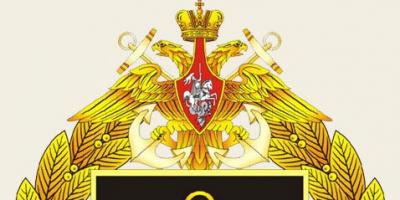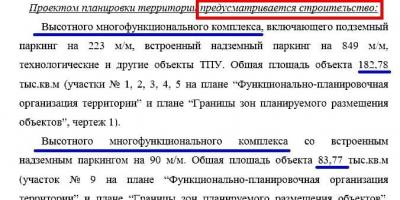May 13 is the Day of the Black Sea Fleet of the Russian Navy - an annual holiday celebrated in honor of the creation of the Black Sea Fleet.
The formation of the Black Sea Fleet began after joining the Russian Empire in 1783. The first basing point of the Black Sea Fleet was Akhtiarskaya (Sevastopol) Bay southwest of the Crimean Peninsula. This is where it was laid. Now the Black Sea Flotilla is based at the Sevastopol and Novorossiysk naval bases.
What is the Russian Black Sea Fleet?
Today, the Russian Black Sea Fleet ensures the military security of the country in the south. It consists of 2,739 ships - sailing, battleships, large missile, patrol, reconnaissance, landing, small missile, mine-sweeping ships, squadron battleships and destroyers, cruisers, submarines, sea hunters, gunboats, boats, rescue, auxiliary, hydrographic ships and other vessels. In addition, the fleet also has submarines, surface ships for operations in the ocean and near sea zones, naval missile-carrying, anti-submarine and fighter aircraft, and units of coastal troops. Aviation is stationed at the airfields of Kacha (7057th mixed air base of the Black Sea Fleet) and Gvardeysky (assault squadron 7057 of the Black Sea Fleet Air Base of the Russian Federation).
The number of personnel of the Black Sea Fleet by the spring of 2014 was 25,000 people.
In 2013, the ships of the fleet made 9 long voyages, visiting 37 ports of 13 states. Planes and helicopters of the Naval Aviation of the Black Sea Fleet performed more than 300 sorties during the year.
Starting from 2014, the Black Sea Fleet will begin to be replenished with new generation submarines. Before the beginning of 2015, the flotilla will receive into service the first of six patrol ships of the Admiral Grigorovich project, built at the Baltic shipyard Yantar in Kaliningrad, and by 2016, the Black Sea Fleet will receive submarines built by Admiralty Shipyards OJSC (St. -Petersburg). In total, they want to allocate more than 86 billion rubles for the development of the Black Sea Fleet until 2020. It is also planned to create new air defense units and marine corps units at the Russian fleet bases.
History of the Russian Black Sea Fleet
The Black Sea Fleet was founded in the 18th century by decree Empress Catherine II after the annexation of Crimea to Russia. On May 13, 1783, ships of the Azov and Dnieper flotillas entered the bay near the village of Akhtiar (later the city of Sevastopol). From that time on, the naval forces in the south of Russia began to be called the Black Sea Fleet.

Emblem of the Russian Black Sea Fleet. Photo: Commons.wikimedia.org / Ministry of Defence
Its legal successor was the Black Sea Fleet of the USSR Navy, which existed until the collapse of the Soviet Union in 1991, after which in 1996 it was divided into the Russian Black Sea Fleet and the Ukrainian Navy with separate basing on Ukrainian territory. On August 3, 1992, in Mukhalatka (near Yalta), the presidents of the two countries Boris Yeltsin And Leonid Kravchuk signed an Agreement on a phased settlement of the Black Sea Fleet problem, according to which the Ukrainian Navy and the Russian Black Sea Fleet are based separately.
And on June 9, 1995 in Sochi, the presidents of the Russian Federation and Ukraine Boris Yeltsin and Leonid Kuchma An agreement was signed on the separate basing of the Russian Black Sea Fleet and the Ukrainian Naval Forces.
Sevastopol was assigned the status of the main base of the Russian Black Sea Fleet. The ships were divided in the proportion of 81.7% - Russia, 18.3% - Ukraine.
On May 28, 1997, three agreements were signed between Ukraine and Russia in Kyiv: on the parameters of the division of the Black Sea Fleet, on the status and conditions of the presence of the Black Sea Fleet of the Russian Federation on the territory of Ukraine. The cost of renting the Black Sea Fleet base in Ukraine amounted to $98 million. In addition, according to the agreements, the Russian Federation had to pay for utilities and transport services. According to the documents, the period of use by the Russian fleet of land, water areas, bays and infrastructure in Crimea was 20 years from the date of signing.
Ukraine agreed to the location of Russian naval facilities in Sevastopol: 31 test centers, the Gvardeysky airfield, as well as HF communications points in Yalta and Sudak and a Crimean military sanatorium. The main bay - Sevastopolskaya with berths for parking more than 30 warships, Karantinnaya Bay with a brigade of missile boats of the Black Sea Fleet and a diving range, Cossack Bay, where the marine corps brigade is located, and Yuzhnaya Bay - were transferred to Russia on a 20-year lease. Ships of the Russian and Ukrainian fleets are jointly based in Streletskaya Bay, with the Black Sea Fleet controlling the coastal infrastructure of the bay. Russia also received the main arsenal of ammunition, a missile base for the Black Sea Fleet, an landing range, the 31st test center in Feodosia, and two airfields: Gvardeyskoye near Simferopol and Sevastopol (Kacha).
According to the agreements, Russia could have no more than 25 thousand personnel, 24 artillery systems with a caliber of more than 100 mm, 132 armored vehicles, and 22 aircraft in Ukraine. The number of Russian ships and vessels should not exceed 388 units. The leased airfields in Gvardeyskoye and Sevastopol (Kach) could accommodate 161 aircraft.

Coastal ships of the Black Sea Fleet parked near the city of Sevastopol. Photo: RIA Novosti / Sergey Petrosyan
April 21, 2010, the presidents of the Russian Federation and Ukraine Dmitry Medvedev And Victor Yanukovich in Kharkov, they signed an Agreement on the presence of the Russian Black Sea Fleet on the territory of Ukraine (ratified by the State Duma of the Russian Federation and the Verkhovna Rada of Ukraine on April 27, 2010). The stay of the Russian base in the Black Sea was extended by 25 years (until 2042) with the right to extend it for the next five-year period if neither side declares the need to terminate this agreement.
The cost of rent for the stay of the Russian Black Sea Fleet on the territory of Ukraine until May 28, 2017 is $97.75 million per year. They wrote it off to pay off Ukraine’s national debt to Russia. Starting from May 28, 2017, the lease payment was to be $100 million per year, plus additional discounts for Russian gas of $100 at a price of more than $330 per thousand cubic meters, or 30% of the contract price.
Denunciation of the Agreements
In March 2014, the main base of the Russian Black Sea Fleet in Sevastopol came under the jurisdiction of Russia. The Kharkov agreements, according to which the fleet was based in Crimea, were denounced by the Russian Federation due to the loss of the subject of the agreements. On March 18, 2014, an Agreement was signed between the Russian Federation and the Republic of Crimea on the formation of new entities within the Russian Federation.
Russian President Vladimir Putin instructed the government, together with the Ministry of Defense, to develop a program for the development of the Black Sea Fleet. The deadline for execution of the order is June 1, 2014. Responsible for implementation - Russian Prime Minister Dmitry Medvedev And Head of the Ministry of Defense Sergei Shoigu.
The Black Sea Fleet is an operational-strategic association of the Russian Navy in the Black Sea, which includes diesel submarines, surface ships for operations in the ocean and near sea zones, naval missile-carrying, anti-submarine and fighter aircraft, and units of coastal troops.
The history of the origin and formation of the Black Sea Fleet dates back to the second half of the 18th century, when Russia achieved major successes in the struggle for access to the seas and established itself on the shores of the Azov and Black Seas. Sailors of the Black Sea Fleet took an active part in the revolutionary events of 1917, and from the spring of 1918 they participated in the fight against the advancing forces of German troops. During the Great Patriotic War, the Black Sea Fleet defended bases and coasts, protected its communications, acted on enemy communications, and carried out air strikes on its coastal facilities. Subsequently, having restored the infrastructure destroyed by the war, the Black Sea Fleet carried out tasks to protect the southern borders of the country.
After the collapse of the USSR, from August 1992, the Black Sea Fleet existed as a united fleet (of the Russian Federation and Ukraine). According to the bilateral agreements on the Black Sea Fleet of 1995 and 1997, on its basis, the Russian Black Sea Fleet and the Ukrainian Navy were created with separate basing, and the status of the Russian fleet on the territory of Ukraine was determined.
On June 12, 1997, the historical St. Andrew's flag was again raised on the ships of the Russian Black Sea Fleet, under which the Black Sea sailors resumed their participation in long-distance voyages not only in the Mediterranean Sea, but also in the Atlantic, Indian and Pacific oceans. In 2010, the Black Sea Fleet organizationally became part of the Southern Military District.
On April 2, 2014, in connection with the admission of the Republic of Crimea to the Russian Federation and the formation of new subjects within the Russian Federation - the Republic of Crimea and the federal city of Sevastopol, the President of Russia signed the Federal Law "On the termination of agreements relating to the presence of the Black Sea Fleet of the Russian Federation on the territory of Ukraine" . After this, the renewal of the naval personnel, aviation and equipment of the coastal troops of the Black Sea Fleet began.
The Black Sea Fleet protects Russia's economic interests in the region, ensures the safety of navigation, and carries out foreign policy actions of the government in economically important areas of the World Ocean (visits, business calls, joint exercises, actions as part of peacekeeping forces, etc.). During the operation of the Russian Aerospace Forces in Syria, fleet forces from the permanent naval group in the Mediterranean provided maritime cover for aviation operations from the Khmeimim airbase.
Return to home harbor:
Black Sea Fleet after the reunification of Crimea with Russia
The Black Sea Fleet (BSF) was founded in May 1783 after the annexation of Crimea to Russia. Sevastopol became his main base.
Two years ago, after the reunification of Crimea with Russia, the Black Sea Fleet found a second wind. Today, one of its tasks is to support the actions of the Russian Aerospace Forces in Syria.
Alexander Vitko, commander of the Black Sea Fleet
As a result of defeat in the Crimean War, according to the Paris Peace Treaty of 1856, Russia lost the right to have a navy in the Black Sea. These restrictions were abolished by the London Convention of 1871.
After the October Revolution of 1917, during the withdrawal of the White Guard troops of General Wrangel from Crimea, over 130 ships and vessels were taken abroad. In 1921, a decision was made to restore the Black Sea Fleet. For 1929-1937 The Black Sea Fleet received more than 500 warships of various classes and hundreds of combat aircraft.
During the Great Patriotic War, the Black Sea Fleet conducted 24 landing operations, 835 enemy ships and vessels were sunk, and 539 were damaged. 18 ships and units were awarded the title of guards, 228 people became Heroes of the Soviet Union. The heroic defense of Sevastopol during the war is known far beyond Russia.
In the post-war years, new ships and military equipment entered service with the fleet, allowing the ships to go on long voyages. In 1991, the fleet consisted of about 100 thousand personnel, 835 ships and vessels of almost all existing classes.
How the Black Sea Fleet was divided
After the collapse of the USSR in 1991, the Black Sea Fleet became the subject of a dispute between Russia and Ukraine. An agreement was reached only in 1997, when Moscow and Kyiv, in preparation for the signing of the “Great Treaty” of friendship and cooperation, agreed to divide the fleet.
The Ukrainian side received 67 ships and 90 combat aircraft, and Russia – 338 ships and 106 aircraft and helicopters. In addition, the bases in Crimea were leased to Russia. The agreements were concluded until 2017, and then extended in 2010 until 2042.
Since 2000, the Ukrainian Foreign Ministry has blocked the conclusion of an agreement on the pace and conditions of renewal of the Black Sea Fleet, insisting that each replacement be carried out with the permission of Kyiv on the principle of “type for type” and “class for class.” The Russian side did not agree with this, and as a result, the agreement was never concluded.
In 2008, President of Ukraine Viktor Yushchenko signed two decrees (numbers 705 and 706), which prohibited the simplified regime for Black Sea Fleet formations to cross the state border of Ukraine. Kyiv also refused to cancel customs duties when importing material and technical equipment and goods for the Black Sea Fleet into the territory of Ukraine.
As a result, since 1997, the Black Sea Fleet has been strengthened with just one hovercraft, the Samum, and Su-24 front-line bombers.
New life
After the reunification of Crimea with Russia, at the end of 2015 alone, the fleet received more than 200 units of new types of weapons and military equipment, about 40 different ships and vessels, including:
Three new generation diesel-electric submarines,
Two small rocket ships,
10 combat boats,
20 ships and boats of the auxiliary fleet,
More than 30 aircraft (including Su-30SM fighters and drone kits).
Units of the coastal troops were replenished with 140 units of the latest armored vehicles.
In 2015, the frigate Admiral Grigorovich was tested in the Baltic. In total, it is planned to build six ships under this project, of which in 2016 the Black Sea Fleet will receive three - “Admiral Grigorovich”, “Admiral Essen”, “Admiral Makarov”. Also in 2016, two diesel-electric submarines of Project 636.3, Veliky Novgorod and Kolpino, which will complete the series, will be launched and handed over to the fleet.
Vladimir Putin, President of the Russian Federation
Before being appointed commander of the Serpukhov, Lyushin was an assistant commander on the Shtil small missile launcher, launched in 1978. “These ships cannot be compared. “Serpukhov” is a new generation ship, with a high degree of automation. More conditions have been created for the commander to cover with his attention everything that happens inside the ship. There is a video surveillance system. A large number of communications equipment ensures the transmission of commands from higher headquarters, and the system ship monitoring helps in case of emergency situations,” says Lyushin.
Sailors monitor the ship’s life support systems from a special cabin equipped with remote controls and screens. At the same time, they joke: the Serpukhov has an electronic control system, but the older ships had a voice control system. There they simply shouted: “How are you doing in the engine room?”
From stocks to combat service
For the senior sergeant major of the missile team, midshipman Denis Terentyev, Serpukhov is the third ship. The R-44 boat, on which he began to serve, was withdrawn from the fleet “due to age,” like many ships of the Black Sea Fleet, which “grew old” during the Ukrainian period.
“We received this ship from the stocks,” says Terentyev. “We were on a business trip to Zelenodolsk in Tatarstan for six months. I saw it from the very roots, when there was only metal and not a single light bulb.”
From Tatarstan, "Serpukhov" arrived in Novorossiysk, here the crew underwent the first training, and the ship underwent sea and state tests.
The midshipman remembered how, on the day of the famous launch from the Caspian Sea, his mother called him from Volgograd: “She said that for the first time in many years she felt proud of her country and was very glad that her son was serving on such a ship.”
According to him, “Serpukhov” has a very special atmosphere even in everyday life.
The midshipman admits that the entire crew of the Serpukhov is a little jealous of the twin ship Zeleny Dol, which is currently performing tasks as part of a permanent naval group in the Mediterranean Sea. The sailors hope to soon replace their comrades.
When "Serpukhov" goes to sea, more fruits will appear in the sailors' diet, mainly Crimean and Krasnodar, said senior sailor Nikolai Goncharenko, who serves as a cook. According to him, the only thing in which the most modern ship of the fleet does not differ from its “senior comrades” is the diet of the sailors.
“There is no difference in nutritional standards. Sailors eat three times a day, plus evening tea. At sea we have additional standards: more juices, milk, butter, sausage,” said the cook.
Soft mattresses and a secret library
For senior electrician of the anti-aircraft missile battery Vitaly Salchuk on the Serpukhov, everything is different. He began serving under contract in 2013 on the missile boat “Priluki” of the Ukrainian Navy. After the reunification of Crimea with Russia, he transferred to the Russian Black Sea Fleet.
“Look, there are curtains, large beds, soft mattresses, comfortable lockers, like in a compartment car,” Vitaly shows his cabin. “Those guys who don’t rent apartments in the city live here, the conditions are normal. At Priluki everything is the same.” It was in the 1980s, and it remains the same: the beds are small, everything is old, in the cabin there are cable routes along the bulkheads.”
According to Salchuk, the conditions of contract service in Russia are much more favorable both in terms of salary and material support.
A significant part of the crew’s service is self-training, mastering new modern technology. Sailors obtain specialized literature from the ship's secret library and take notes on it. All books are paper, the use of personal gadgets on the ship is prohibited; they are handed over to the duty officer when they arrive for duty. Along with theory, commanders devote a large amount of time to practical training.
Ship's hospital
Instrument panels and computer screens throughout the ship give the misleading impression of some kind of scientific institution. You remember that all this was created for real combat operations in the control room of paramedic Alexander Terekhin. He showed medical devices for first aid in case of injuries, an operating table, which, if necessary, will be deployed in the wardroom, and devices for transporting victims.
One of the duties of a paramedic is to monitor the temperature conditions both in the cockpits and at combat posts.
“On the Serpukhov there is only one porthole - in the duty room. The design features do not affect the well-being of the crew in any way. As for comfort, we have air conditioning everywhere. The temperature is set in each cockpit. There are no problems with ventilation. It’s warm in winter, cool in summer,” - says Terekhin.
Story
History before 1917
The Black Sea Fleet was founded in 1783 after Russia annexed Crimea. Its first base was Akhtiarskaya Bay, located on the southwestern coast of the Crimean Peninsula. The city of Sevastopol was founded here.
The fleet developed and grew at a rapid pace, and already in 1787 it consisted of 3 battleships, 12 frigates, 3 bombardment ships, and 28 other warships. The fleet was controlled by the Black Sea Admiralty.
According to bilateral agreements on the temporary (until May 28, 2017) presence of the Russian Black Sea Fleet (BSF) in Ukraine from 1995 and 1997, on the basis of the Black Sea Fleet, the Russian Black Sea Fleet and the Ukrainian Navy were created with separate basing on the territory of Ukraine.
70% of the entire infrastructure of the Russian Black Sea Fleet is located on the territory of Crimea. The 25,000-strong fleet personnel are stationed at three bases: in Sevastopol (Sevastopolskaya, Yuzhnaya, Karantinnaya, Kazachya bays), Feodosia, Novorossiysk and temporarily in Nikolaev, where the construction and repair of Russian ships is underway.
According to the Agreement between Ukraine and the Russian Federation on the status and conditions of the presence of the Black Sea Fleet of the Russian Federation on the territory of Ukraine dated May 31, 1997, a group of Russian ships and vessels of up to 388 units (of which 14 diesel submarines) may be located in Ukrainian territorial waters and on land ). The leased airfields in Gvardeysky and Sevastopol (Kach) can accommodate 161 aircraft. This is quite comparable to the power of the Turkish naval group. The said Agreement was concluded for 20 years. The term of the Agreement will be automatically extended for subsequent five-year periods unless either Party notifies the other Party in writing of the termination of the Agreement no later than one year before its expiration.
Despite this, for example, according to the Internet portal Flot.com dated March 26, 2009:
“Modernization of the ship composition of the Russian Black Sea Fleet on the territory of Crimea is possible only with the consent of Ukraine. This was stated on March 25 by the press secretary of the Ukrainian Foreign Ministry Vasily Kirilich in response to media reports that the Russian Navy intends to transfer submarines to the Black Sea Fleet.
The replacement of weapons of the Black Sea Fleet should occur only with the consent of Ukraine, which is provided for in the agreement on the division of the Black Sea Fleet of 1997, and only after both parties have signed regulatory documents, Kirilich clarified.
The Ukrainian side is against the replenishment of the Black Sea Fleet on the territory of Ukraine with combat units, but the replacement must be carried out adequately, in accordance with the type and class of ships being replaced. This issue is not new and Ukraine’s position on it is well known to the Russian side, Kirilich added.
Earlier, Deputy Chief of the Main Staff of the Russian Navy, Vice Admiral Oleg Burtsev, said that the Black Sea Fleet should have at least 8-10 submarines and will be replenished with them. “Ukraine views this not as a renewal of the fleet, but as the supply of a new type of weapon,” he commented on the statement of the Ukrainian side.”
Chronicle of political confrontation
According to the leadership of the Russian Federation, the aggravation of relations between Ukraine and the Russian Federation was caused by the election in 2004 of the new President of Ukraine Viktor Yushchenko, who, being the guarantor of the Constitution of Ukraine, is obliged to guarantee compliance with the requirements of part 7 of article 17 of the Constitution of Ukraine, which states that “on the territory of Ukraine there is no the placement of foreign military bases is allowed,” as well as paragraph 14 of the Transitional Provisions of the Constitution of Ukraine, which states that “the use of existing military bases on the territory of Ukraine for the temporary stay of foreign military units is possible on lease terms in the manner determined by international treaties of Ukraine ratified by the Verkhovna Rada of Ukraine "
On the night of January 18-19, the Black Sea Fleet command blocked the entry of equipment into the Crimean Sarych lighthouse by placing an armored personnel carrier on its territory. In addition, the command introduces armed units of marines to the four main Crimean lighthouses - Aytodorsky, Evpatoriya, Tarkhankutsky and Sarych. In connection with the unauthorized relocation of military equipment to Cape Sarych, the Ministry of Foreign Affairs of Ukraine sends a note of protest to Russia.
The developments are reminiscent of a similar Russian-Ukrainian confrontation in 2003, when a dispute over several islands of the Tuzla Spit in the Kerch Strait, whose total area is about 3 km², almost escalated into a military clash. In December 2003, the “intervention” of the Russian president was required to resolve the crisis around the Tuzla Spit together with the Ukrainian president.
Representatives of Ukrainian nationalist organizations constantly picket Russian naval facilities in Crimea, demanding to “stop the occupation of Ukraine.”
Ships of the Black Sea Fleet of the Russian Navy.
In December, the plans of the Ukrainian Ministry of Defense to redeploy troops to the Ukrainian-Russian border were made public, but after solving problems with gas transit through the territory of Ukraine and the price of gas for Ukraine, these plans were forgotten.
On June 23, Ukrainian police detained a service bus of the Black Sea Fleet with 30 sailors who were en route to Mount Opuk to the Marine training site. The verification of documents lasted more than 20 hours and ended with the drawing up of reports on an administrative offense under the article “Violation of the rules of stay in Ukraine by foreigners and stateless persons” and one of the servicemen being admitted to a military hospital with heat stroke. Previously, similar cases also occurred. Ukrainian police officers referred to their implementation of Decree of the President of Ukraine No. 705/2008 dated August 13, 2008 “On the situation around movements related to the activities of military units of the Black Sea Fleet of the Russian Federation outside their places of deployment on the territory of Ukraine.” At the same time, the fleet command sent a protest to the Department of the Ministry of Internal Affairs of Ukraine in Sevastopol. In the document, the Russian Black Sea Fleet demands that the police “immediately stop illegal actions” against Black Sea sailors.
In June 2009, the chairman of the SBU, Valentin Nalyvaichenko, stated that FSB officers should leave the territory of Ukraine, citing that the protocol between the FSB and the SBU, signed on January 25, 2000, violates Ukrainian legislation. On December 10, 2009, it was reported that all military counterintelligence officers of the FSB of the Russian Federation who worked in Sevastopol for the Russian Black Sea Fleet left the territory of Ukraine, fulfilling the requirement of the SBU.
2010 2011
According to the decision of the Economic Court of Crimea dated August 2 of this year, the lighthouses of the Russian Black Sea Fleet were to be seized by Ukrainian bailiffs. In particular, bailiffs had to return to Ukraine two stations of the RS-10 radio navigation system located in Yevpatoria and on the territory of the Tarkhankut lighthouse; 6 lighthouses, 9 navigation signs and other equipment located along the Crimean coast were also subject to confiscation.
On August 21, activists of the youth organization “Student Brotherhood” began a civil action with the aim of intensifying the activities of the executive service to return the Crimean lighthouses to Ukraine: they entered the territory of the Sarych lighthouse, cut off the barbed wire and hung signs “Facility of the Ministry of Infrastructure of Ukraine.” 8 people were detained by sailors of the Black Sea Fleet and handed over to the arriving Ukrainian police. On August 23, activists of the same youth organization set up pickets in Sevastopol near the Chersonesos lighthouse of the Black Sea Fleet, demanding its transfer to Ukraine. The Ministry of Foreign Affairs of Ukraine noted that they have a negative attitude towards attempts by representatives of public organizations to penetrate the territory of the Russian Black Sea Fleet in Crimea, since this could lead to tragic consequences.
On October 19, Russia and Ukraine were unable to sign an agreement on replacing the ships of the Russian Black Sea Fleet with new ones. The Ukrainian side put forward conditions under which Russia had to coordinate with it every step to replace ships, provide a full list of weapons for new ships, and conclude contracts for their maintenance with Ukrainian ship repair enterprises. The same applies to ground equipment, coastal systems, and aviation.
On March 6, the Minister of Defense of the Russian Federation, Anatoly Serdyukov, asked to take 440 apartments of the Russian Black Sea Fleet into the balance of Sevastopol. The reason was stated to be the high price of gas.
On April 20, the Russian side asked Ukraine to abolish $15,000,000 in taxes on cargo entering the country for the Russian Black Sea Fleet. At the same time, Russia promises to use the freed up funds to promote the socio-economic development of Sevastopol and other populated areas where the Russian Black Sea Fleet is stationed.
Fleet commanders
The commanders of the Russian Black Sea Fleet are listed here. For lists of commanders of the Black Sea Fleet of the Russian Empire and the Black Sea Fleet of the USSR Navy, see the relevant articles.
Current state
The roster of the Red Banner Black Sea Fleet (2011)
| Type | Name | Manufacturer | Airborne number | Bookmark date | Launching | Commissioning | State | |
|---|---|---|---|---|---|---|---|---|
| Cruisers - 1 | ||||||||
| Project 1164 missile cruiser, Atlant type | "Moscow" | Plant named after 61 Communards (Nikolaev) | 121 | 05.11.1976 | 27.07.1979 | 30.12.1982 | In service. The flagship of the fleet. In 1991-1999 underwent a major overhaul and modernization. Re-equipped from the Basalt anti-ship missile system to the Vulcan anti-ship missile system 11th Anti-Submarine Ship Brigade Based in Sevastopol. Includes the flagship of the Black Sea Fleet, the guards missile cruiser "Moskva" (project 1164), two large anti-submarine ships of project 1134 "Kerch" and "Ochakov" (the latter is not in service) and patrol ships "Smetlivy" (project 61M), "Ladny" and “Inquisitive” (both - project 1135). 197th Landing Ship Brigade Based in Sevastopol. Includes large landing ships of Project 1171 Nikolai Filchenkov, Orsk (not in service) and Saratov, as well as Project 775 and 775M Azov, Novocherkassk, Caesar Kunikov and Yamal. 166th Division of Small Missile Ships Based in Sevastopol (Kurinaya Bay). It consists of Project 1239 Bora and Samum hovercraft, as well as Project 12341 Mirage and Shtil small missile ships. 295th Missile Boat Battalion Based in Sevastopol (Karantinnaya Bay). Includes missile boats R-71 (project 12411R), R-109, R-239, R-60 and R-334-Ivanovets (project 12411).247th separate submarine division Based in Sevastopol. Consists of two diesel submarines: B-871 "Alrosa" and B-380 "St. Prince George" (the latter is under repair). 68th brigade of water area security ships 400th division of anti-submarine ships Based in Sevastopol. Includes four small anti-submarine ships: MPK-49 "Aleksandrovets" (project 1124), MPK-118 "Suzdalets" and MPK-134 "Muromets" (project 1124M), MPK-220 "Vladimirets" (project 11451). 418th minesweeper division Based in Sevastopol. Includes four Project 266M sea minesweepers: “Ivan Golubets”, “Vice Admiral Zhukov”, “Turbinist” and “Kovrovets”.422 separate division of hydrographic vessels of the State Black Sea Fleet Based in Sevastopol, b. South. Vessels pr.861 (GS "Cheleken"), 862/II (GS "Svor" and GS "Donuzlav"), 872/II (MSS "GS-402"), plus large and small hydrographic boats. The last commander of the division is captain 2nd rank Chizhov Dmitry Ivanovich. In February 2012, in connection with organizational measures carried out in the RF Armed Forces, 422 odngs ceased to exist. Instead, a group of ships was created, the group captain of which was Alexey Vasilyevich Pogrebnyakov - http://www.kvvmku.ru/forum/profile.php?mode=viewprofile&u=2087&sid=. In addition, the service department of OJSC "Slavyanka" kicked out of the building at Suvorov, 4. Now they huddle on Gogol, 37. Coastal troops of the Black Sea Fleet11th separate coastal missile and artillery brigade of the Russian Black Sea Fleet Based in Anapa. 810th Marine Brigade of the Russian Black Sea Fleet Based in Sevastopol. Based in Temryuk. 1096th separate anti-aircraft missile regiment of the Russian Black Sea Fleet Based in Sevastopol. 431st Naval Reconnaissance Station Based in Tuapse Naval Aviation Black Sea Fleet7057th mixed airbase of the Russian Black Sea Fleet Kacha airfield is based. Assault Squadron 7057 AvB Russian Black Sea Fleet The Gvardeyskoye airfield is based. Black Sea Fleet exercisesCombat operations of the Russian Black Sea FleetBasing of the Black Sea Fleet in UkraineRussia leases most of the quay walls of the port of Sevastopol for parking more than 30 warships and vessels. The headquarters of the Black Sea Fleet, a central communications center, a naval hospital, the 1096th anti-aircraft missile regiment, the 810th separate marine regiment, the 17th arsenal, and a yacht club are also based in Sevastopol. The total number of Black Sea Fleet in Crimea is about 14,000 people. In March 2005, Russian Defense Minister Sergei Ivanov stated that Sevastopol would remain the main naval base of the Russian Black Sea Fleet at least until 2017. Despite the construction of a naval base in Novorossiysk, there are no plans to transfer the Black Sea Fleet headquarters and naval personnel there. In 2010, the so-called Kharkov agreements were signed between Russia and Ukraine, according to which the basic agreement on the lease of ship bases in Sevastopol was extended until 2042 with the right to further extension for another 5 years. The lease of the naval base in Sevastopol costs Russia $98 million a year and is paid for by Russian gas supplies. Commissioning of new shipsMay 15, 2012 In Novorossiysk, a solemn ceremony of raising the naval flag on the special purpose boat “Grachonok” of project 21980 took place. 2011
see also
Links
Notes
| |

Small missile ships of Project 1234.1 are a further development of Project 1234. They received powerful weapons and more advanced electronic equipment. RTOs are designed to destroy surface ships and enemy fleet formations in far and near sea zones, cover convoy and landing operations of fleet forces, and patrol in specified areas.
"Mirage"(1986, tail number 617),
"Calm"(1978, tail number 620).

Small anti-submarine ships of Project 1124M are a further development of Project 1124. They received more powerful weapons, a new sonar and advanced electronic equipment. The ships of this project are designed to search and destroy enemy submarine forces in far and near sea zones, provide anti-aircraft defense and air defense to fleet formations, cover convoy and landing operations of fleet forces, and patrol in specified areas. They were built in several series, which differ slightly in performance characteristics. Project 1124M MPKs are the main escort ships of the Russian Navy.
As part of the Black Sea Fleet:
MPK-118 "Suzdalets"(1983, tail number 071),
MPK-134 "Muromets"(1982, tail number 064),
MPK-199 "Kasimov"(1986, tail number 055),
MPK-207 "Povorino"(1989, tail number 053),
MPK-217 "Eysk"(1989, tail number 054).

The small anti-submarine ship "Aleksandrovets" of Project 1124 is designed to search and destroy enemy submarine forces in far and near sea zones, provide anti-submarine warfare and air defense to fleet formations, cover convoy and landing operations of fleet forces, and patrol in specified areas. The ships of this project were the main escort ships of the USSR Navy. They were built in several series. The MPC received modern air defense and anti-aircraft weapons, two sonar systems, and new radio-electronic equipment. "Alexandrovets" is the last operational ship of the project.
In the fleet since 1982

The small anti-submarine ship "Vladimirets" of Project 1145.1 is a further development of Project 1141. It received new weapons, more advanced sonar and electronic equipment, and the design of the ship was improved. As a power plant, it received economical gas turbines, which allows it to provide a wide range of speeds and operating modes. Small anti-submarine ships are unique in their design - they are equipped with fixed-type hydrofoils with automatically controlled flaps. Project 1145.1 MPKs are designed to search and destroy enemy submarine forces in far and near sea zones, provide anti-aircraft defense and air defense to fleet formations, cover convoy and landing operations of fleet forces, and patrol in specified areas. IPCs on PC have no analogues in any fleet in the world. "Vladimirets" is the last active ship in the series.
In the fleet since 1991

The sea minesweeper "Zheleznyakov" of Project 12660 is a new generation mine-resistant ship, which has received modern weapons, electronic equipment, and means of searching and destroying mines. For the first time in the Russian fleet, it can search for mines directly along the ship's path. MTSH is designed to search and destroy mines in far and near sea zones, cover convoy and landing operations of naval forces, and patrol in specified areas. MTSh Project 12660 are the most advanced mine-resistant ships of the Russian Navy.
In the fleet since 1988

The sea minesweeper "Vice Admiral Zakharyin" of project 02668 is a further development of project 266M. The ship received new weapons, mine-anti-mine systems (for example, GAS Livadia) and radio-electronic equipment. The minesweeper can search for mines directly along the ship's path. It is designed to search and destroy mines in far and near sea zones, cover convoy and landing operations of naval forces, and patrol in specified areas.
In the fleet since 2009

The sea minesweeper "Valentin Pikul" of Project 266ME is a further development of Project 266M. The ship received new weapons, mine protection systems and electronic equipment. The minesweeper is designed to search and destroy mines in far and near sea zones, cover convoy and landing operations of naval forces, and patrol in specified areas.
In the fleet since 2001

Sea minesweepers of Project 266M are a further development of Project 266. They received new weapons and mine protection systems, and the design of the ship was improved. Minesweepers are designed to search and destroy mines in far and near sea zones, cover convoy and landing operations of naval forces, and patrol in specified areas. They were the main type of mine-resistant ship in the maritime zone of the USSR Navy.
As part of the Black Sea Fleet:
"Vice Admiral Zhukov"(1978, tail number 909),
"Ivan Golubets"(1973, tail number 911),
"Turbinist"(1972, tail number 912),
"Kovrovets"(1974, tail number 913).

Basic minesweepers of Project 1265 are designed to search and destroy mines in the near sea and base zones, cover convoy and landing operations of naval forces, and patrol in specified areas. They were produced in several series, which differed slightly in performance characteristics. This project was the main type of mine-resistant ship in the base zone of the USSR Navy.
As part of the Black Sea Fleet:
BT-40 "Lieutenant Ilyin"(1982, tail number 438),
BT-241 "Mineralnye Vody"(1990, tail number 426).








